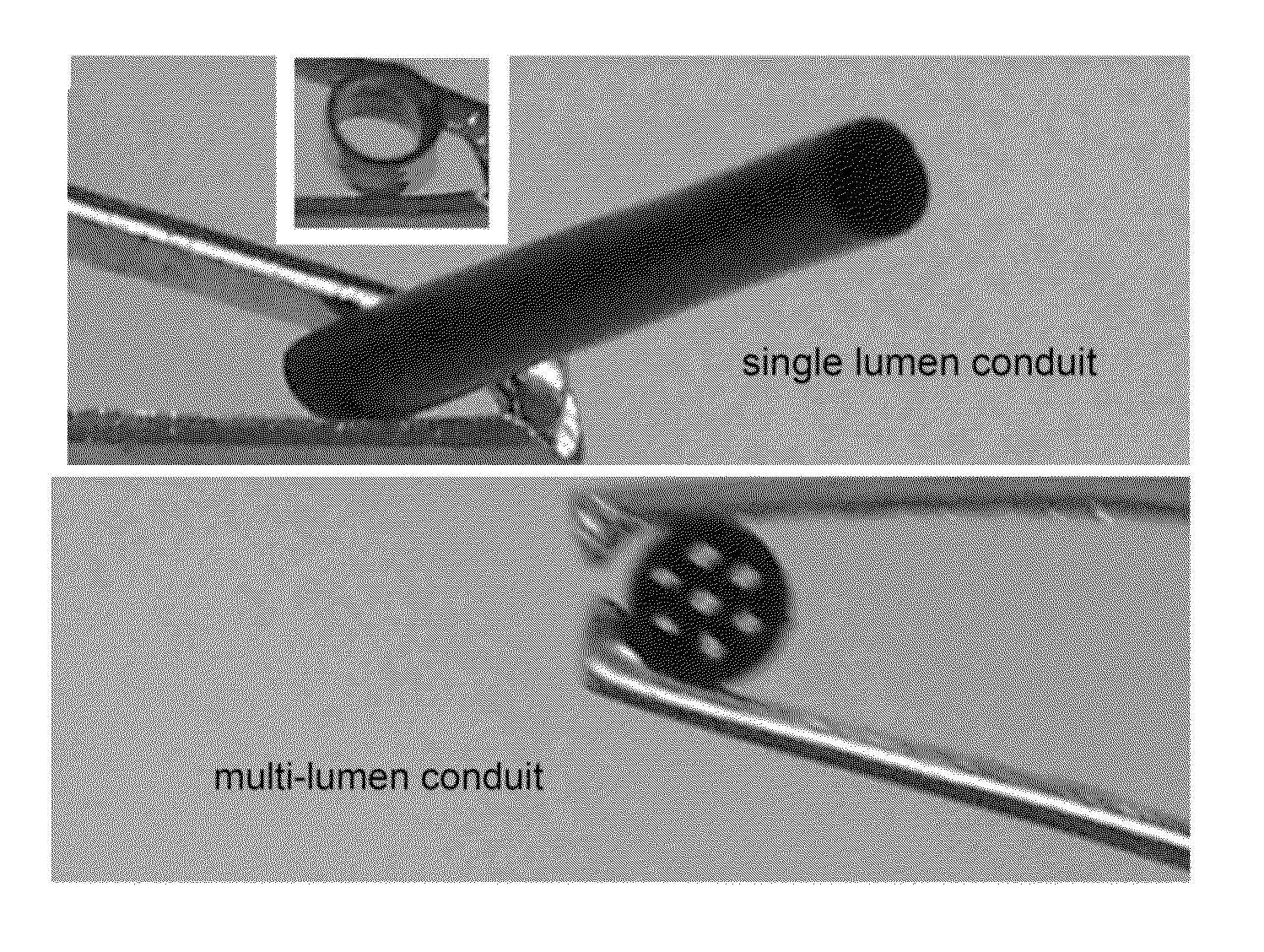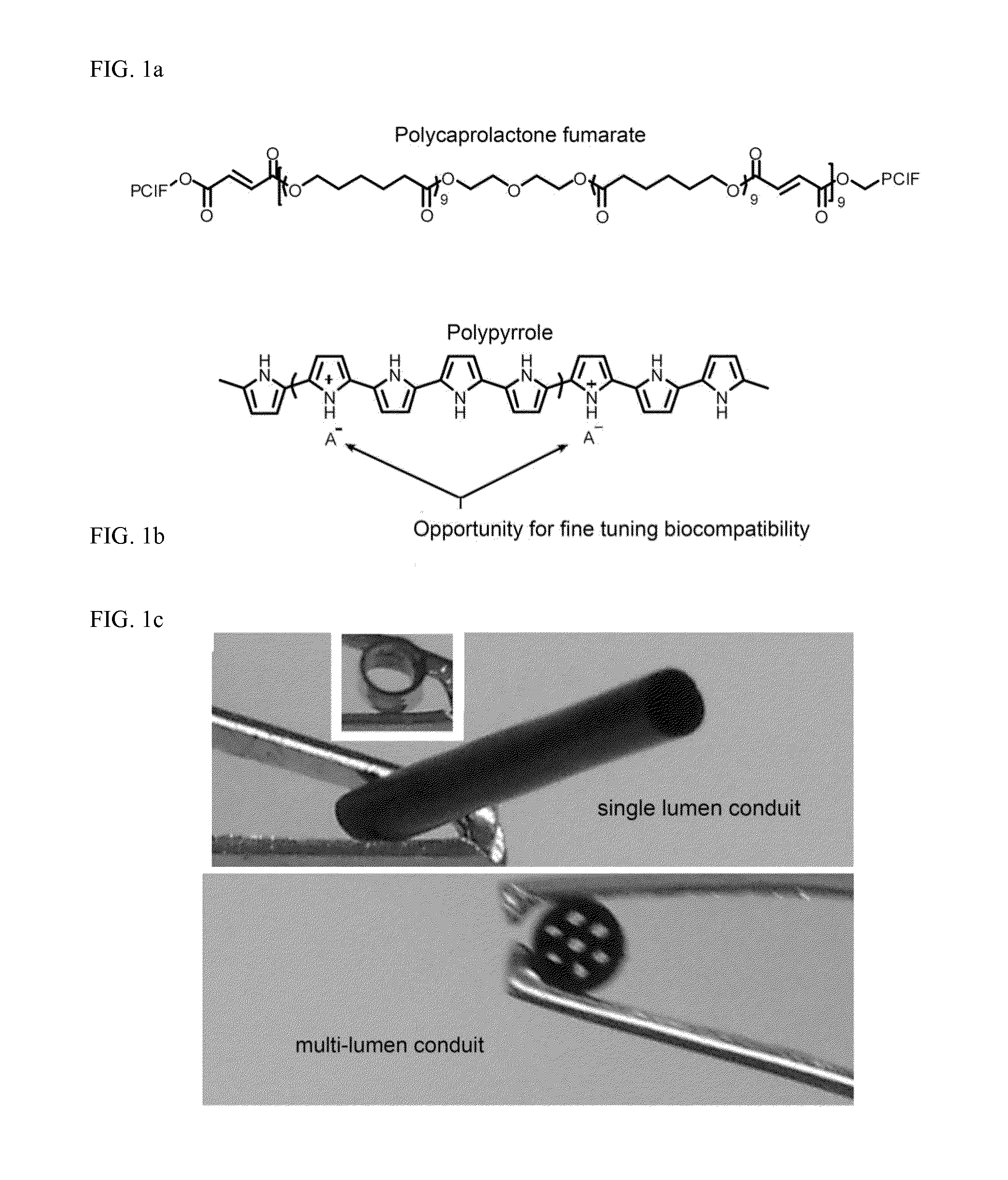Conductive polymeric composites of polycaprolactone fumarate and polypyrrole for nerve regeneration
a technology of polycaprolactone and polypyrrole, which is applied in the field of conductive polymeric composites of polycaprolactone fumarate and polypyrrole for nerve regeneration, can solve the problems of insufficient donor nerve length, frequent neurological damage to either the central or peripheral nervous system, and morbidity at the donor site, so as to improve cellular viability, improve the effect of neurite extension and optimize chemical composition
- Summary
- Abstract
- Description
- Claims
- Application Information
AI Technical Summary
Benefits of technology
Problems solved by technology
Method used
Image
Examples
Embodiment Construction
[0036]A novel synthetic method to produce composite materials composed of polycaprolactone fumarate (PCLF) and polypyrrole (PPy) is disclosed. PCLF (chemical structure shown in FIG. 1) is a chemical or photo-cross-linkable derivative of polycaprolactone that can be easily processed into complex three-dimensional structures by injection molding. PCLF has been shown to be biocompatible, has good mechanical properties that make it suitable for use in applications for nerve guidance conduits, and have tunable degradation rates [See Wang, S.; Lu, L.; Gruetzmacher, J. A.; Currier, B. L.; Yaszemski, M. J. Synthesis and characterizations of biodegradable and crosslinkable poly(e-caprolactone fumarate), poly(ethylene glycol fumarate), and their amphiphilic copolymer. Biomaterials 2006; 27:832-841.; Jabbari, E.; Wang, S.; Lu, L.; Gruetzmacher, J. A.; Ameenuddin, S.; Hefferan, T. E.; Currier, B. L.; Windebank, A. J.; Yaszemski, M. J. Synthesis, material properties, and biocompatibility of a no...
PUM
| Property | Measurement | Unit |
|---|---|---|
| frequency | aaaaa | aaaaa |
| current | aaaaa | aaaaa |
| RMS roughness | aaaaa | aaaaa |
Abstract
Description
Claims
Application Information
 Login to View More
Login to View More - R&D
- Intellectual Property
- Life Sciences
- Materials
- Tech Scout
- Unparalleled Data Quality
- Higher Quality Content
- 60% Fewer Hallucinations
Browse by: Latest US Patents, China's latest patents, Technical Efficacy Thesaurus, Application Domain, Technology Topic, Popular Technical Reports.
© 2025 PatSnap. All rights reserved.Legal|Privacy policy|Modern Slavery Act Transparency Statement|Sitemap|About US| Contact US: help@patsnap.com



